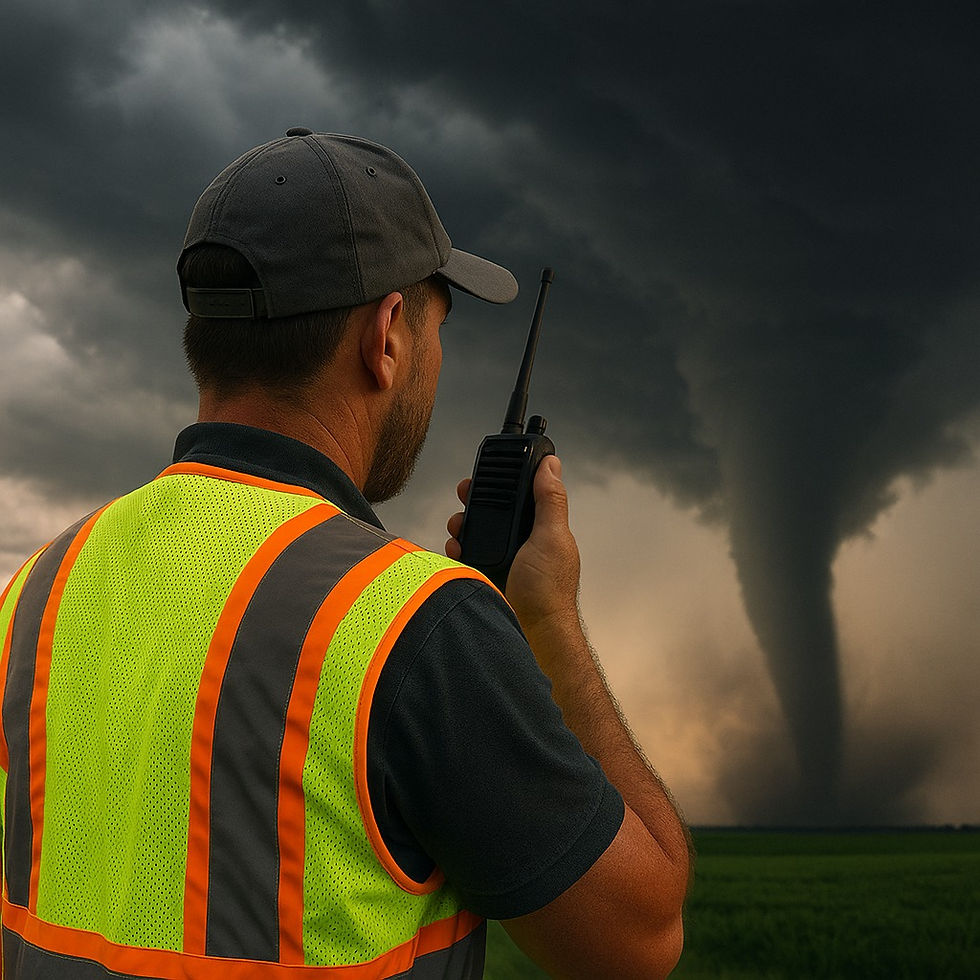MRES Volunteers: The Critical On-the-Ground Eyes of the NWS SKYWARN Program
- Mark Armstrong
- Sep 14
- 2 min read
With the average lead time for a tornado warning at just 13 minutes, the real-time observations of Managed Radio Emergency Services (MRES) trained volunteers, acting as National Weather Service (NWS) SKYWARN spotters, are essential for providing the public with life-saving information.

The mission of MRES members in this context is to provide vital "ground truth" to meteorologists. While advanced Doppler radar can detect rotation within a storm, it cannot always confirm if a tornado has actually touched down. This is where MRES volunteers come in. Having received specialized training from the NWS, they can recognize the visual cues of a developing or ongoing tornado, such as a visible funnel cloud, swirling debris, or the first signs of damage. Their precise reports confirm the immediate threat and allow the NWS to issue or update warnings with greater confidence and accuracy.
The reports conveyed by MRES members in the field are crucial for two key reasons. First, they provide a real-time verification of a tornado's presence and behavior, allowing people in the path of the storm the precious minutes they need to seek shelter. Second, their accurate reporting helps meteorologists make more informed decisions, which can reduce the number of "false alarms." This is critical for preventing "warning fatigue," a phenomenon where the public becomes less likely to take future warnings seriously if they are issued too frequently without a confirmed event.
By committing to this mission, MRES members serve as a cornerstone of the modern tornado warning system. Their trained eyes and timely reports ensure that communities are not only warned but are also informed and empowered to act in the face of a rapidly developing crisis.







Comments